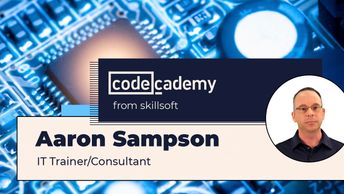IT Professional Certifications CompTIA CompTIA A+ CompTIA A+ 220-1101
Motherboards are the backbone that connect computer components and enable them to communicate. Discover motherboards, the basics of central processing units (CPUs), and add-on cards, as well as the various factors that need to be considered to install and configure them in your computer.
In this course, you will learn about motherboard form factors and connector types. Discover the basic input/output system (BIOS) of your computer, how to configure BIOS security, and how BIOS contains the most basic system software that allows you to booth the system and your operating system to interact with the hardware. Explore Complementary Metal Oxide Semiconductor (CMOS) batteries, your CPU's processing core, and the differences between single core and multi-core processors.
Finally, explore CPU features and compatibility, compare two of the most popular manufacturers of microprocessors, and learn about cooling mechanisms for the CPU including options for dissipating heat in your system.
This course will prepare learners for the CompTIA A+ Core 1 (220-1101) certification.
In this course, you will learn about motherboard form factors and connector types. Discover the basic input/output system (BIOS) of your computer, how to configure BIOS security, and how BIOS contains the most basic system software that allows you to booth the system and your operating system to interact with the hardware. Explore Complementary Metal Oxide Semiconductor (CMOS) batteries, your CPU's processing core, and the differences between single core and multi-core processors.
Finally, explore CPU features and compatibility, compare two of the most popular manufacturers of microprocessors, and learn about cooling mechanisms for the CPU including options for dissipating heat in your system.
This course will prepare learners for the CompTIA A+ Core 1 (220-1101) certification.
| Objectives |
|---|
CompTIA A+ (220-1101): Motherboards, CPUs, and Add-on Cards
|


